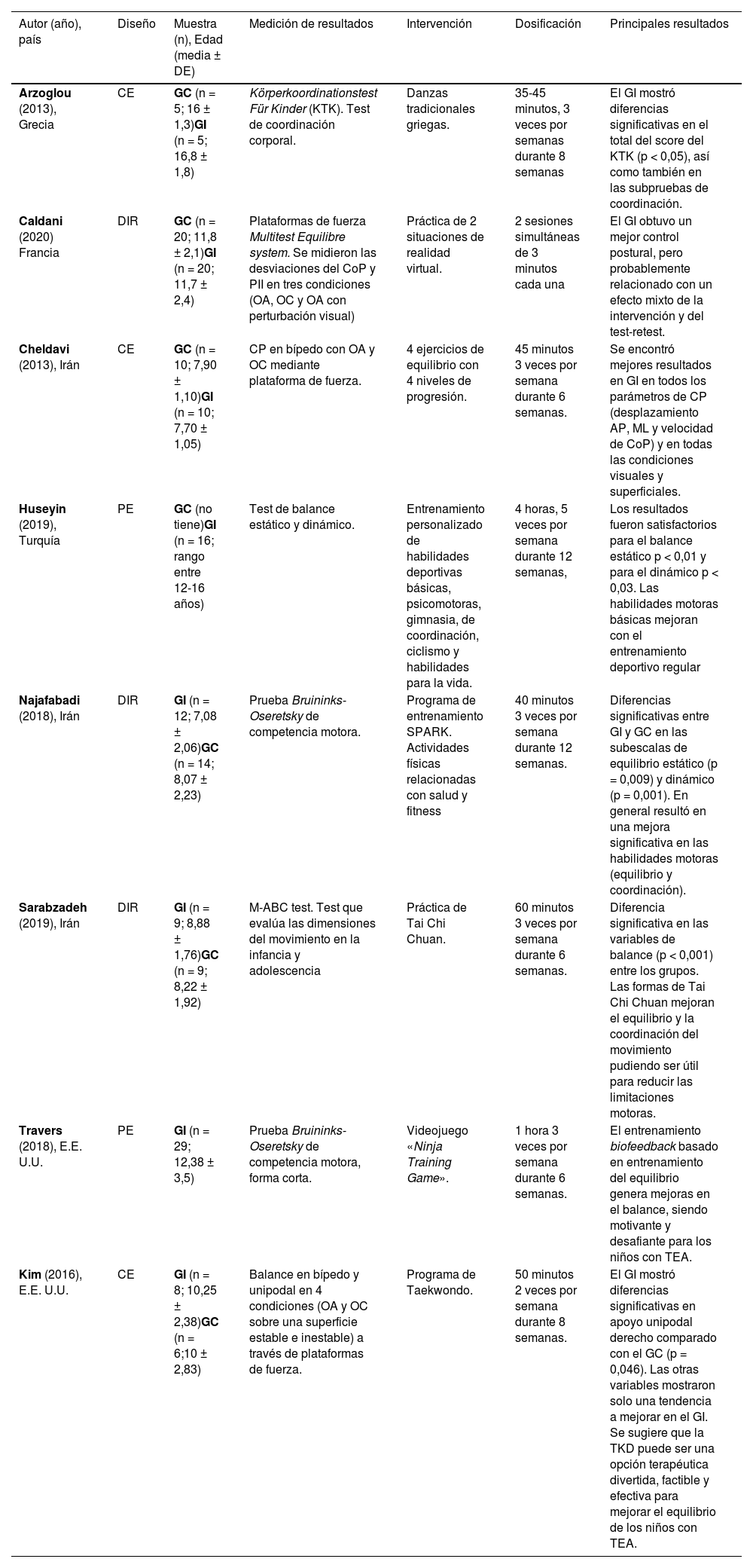El trastorno del espectro autista (TEA) posee características variadas con un impacto a nivel social, comunicativo y sensoriomotor (SM). Una característica SM son los problemas sobre el control postural (CP). Variadas son las estrategias de intervención motora (EIM), pero el beneficio sobre el CP es algo que se ha analizado de forma menos amplia. El objetivo fue describir las EIM y sus resultados sobre el CP de niños y adolescentes con TEA. Se realizó una búsqueda en PubMed, Scopus, Web of Science y Cochrane. Un total de ocho artículos cumplieron con los criterios de elegibilidad. Todas las EIM mostraron resultados beneficiosos sobre el mejoramiento del CP y fueron de diferente naturaleza (práctica de bailes, actividad física personalizada, videojuegos, Tai Chi Chuan, Taekwondo y realidad virtual). Es necesario mejorar los diseños y considerar los riesgos de sesgos, pues limitan el alcance de los resultados.
Autism spectrum disorder (ASD) has varied characteristics with an impact at the social, communicative and sensorimotor (SM) level. An SM feature is postural control (PC) problems. There are various motor intervention strategies (MIS), but the benefit over LC is something that has been analyzed less extensively. The objective was to describe the MIS and its results on the PC of children and adolescents with ASD. A search of PubMed, Scopus, Web of Science and Cochrane was performed. A total of eight articles met the eligibility criteria. All MIS showed beneficial results on the improvement of PC. The MIS were of a varied nature (dance practice, personalized physical activity, video games, Tai Chi Chuan, Taekwondo and virtual reality). It is necessary to improve the designs and consider the risks of bias, since they limit the scope of the results.










